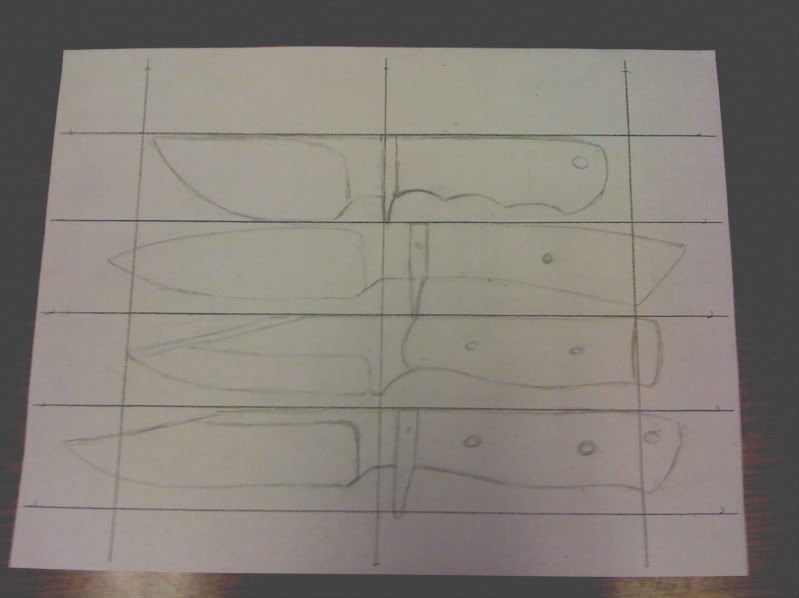To give an answer/opinion to the tapered tang question: I do a lot of "smallish" knives, say 5-6" OAL, I just like 'em. To me, these knives dont carry a tapered tang well, the handles are usually "three fingered" and it just looks stupid in my opinion. So the only thing left for balance/weight decreasing is holes or grinding the "trough". Since these knives are also fairly shallow handled, then holes are the only real option- plus you get the epoxy pin effect.
When I do a larger knife, I trough the tang and then taper it (if I taper it). Some designs look better to me with, and some without a tapered tang. If without, I just drill 1/2" holes where I can.
However, I would challenge anyone to test what the difference in failure point of the two methods would be. Given a properly fitted, epoxied, pinned/rivited handle, I would be willing to bet the poundage to break either would be far beyond any normal using force and the difference then would only be marginal. Particularly on a "blade only" hardened knife. I have always looked at tapered tangs as more of a esthetic(sp?) way of accomplishing a task, i.e. balance, feel. And then only on some designs....
From an engineering standpoint, what Ed says is mostly correct, especially on larger handles. But I contend that it would be "over-engineering"...not that there is anything wrong with that!
What do ya'll think?
Now for a "trick of the trade" - I learned this one from my esteemed friend Robert Dark:
Put masking tape on the tang side of your scales, then SGlue them together, now you cant finish the front of the scales as if they were on the knife, overlay the knife onto one side and drill the holes through both using the tang as your guide. Then, simply pry the two pieces apart- the masking tape will peel right off. Viola!


